Pusarla Venkata Sindhu’s remarkable win at the BWF World Championship not only added a memorable chapter to India’s sporting legacy but also ensured its national media a convincing headline, sans any exaggeration.
By Bikash Mohapatra. Photos: Badmintonphoto
Sample this.
Sindhu settles for silver
Sindhu loses to Carolina Marin
Sindhu wins historic silver
These are some of the headlines that the Indian media has repeatedly used in the last few years. Indian television channels and web sites have conveniently used them on Sunday evenings, and the same lines were displayed in bigger fonts across newspaper pages on Monday morning.
Truth be told, such headlines don’t convey the news in an accurate manner. They are, on the contrary, misinformation or misleading information. A player doesn’t ever win silver; he/she loses out on gold. Such interpretation, besides undermining the actual champion’s achievement, also camouflages the harsh reality – the sportsperson being glorified has actually lost.
Now, sample this.
Sindhu is World Champion
Sindhu wins historic gold
World Champion P V Sindhu returns home
These are some of the headlines in the Indian media following P V Sindhu’s landmark win in the singles discipline at the BWF World Championships in Basel, Switzerland. The conviction in the above headlines is palpable, the news has been reported the way it should be, no exaggeration whatsoever.
Before you blame the Indian media, suffice to say they are not at fault. Okay, it will be fair to say they are not the only ones at fault. On the contrary, the Indian sports media is actually a desperate tribe, for no fault of their own.
For a nation that is home to a fifth of the world’s population, India’s sporting successes can be counted on finger tips. The genuine achievements have been few and far between, and in such a scenario those reporting on sports – and it is quite a large number – on a day-to-day basis have no alternative but to hard sell, eulogize every minor performance and attempt to create heroes, something that will help cater to a market.
So results that probably find a passing mention elsewhere make the headlines in the Indian media. Carolina Marin’s historic gold at the Rio Olympics, for example, was just one among several other headlines in Spain. Meanwhile, Sindhu’s silver was the lead story in India that day.
Considering after cricket, badminton is the other sport that has many Indians playing at the top level, it has palpably gained prominence in the Indian media. The rise of Saina Nehwal, followed by Sindhu and a host of other male players – Kidambi Srikanth, B Sai Praneeth, HS Prannoy, etc. -coupled with the decline of the once mighty Chinese, has for the last few years fuelled hopes among the Indian fans and media alike.
While the fans throng the stadiums to cheer for their favourite players, the media glorifies every win as if it were a hitherto unachieved feat. It is a win-win situation. The only glitch, the results haven’t been commensurate to the hype created.
Saina, for example, has been playing for years, has won a lot and can be credited with reviving the Indian interest in badminton. She is a good player, a great ambassador of the game and someone who has won laurels for the country. No two ways about it.
However, also true is the fact that she is yet to win a big one. She may have participated at the World Championships a dozen times, but silver at Jakarta in 2015 remains her best effort. Likewise, at the Olympics a bronze at London 2012 – courtesy of the fact that her opponent, China’s Wang Xin, retired while leading – is her best achievement.
The men…well, suffice to say they have made up for the numbers on the tour, but save for Srikanth’s amazing season in 2017 – when he won big ticket tournaments in Indonesia and Denmark among others – there’s really nothing much to write about. On second thought, the Indian media can now harp on Sai Praneeth’s bronze in Basel.
The Sindhu saga albeit is very different, not because she has won a lot but owing to the fact that the consistency and relentlessness that she has displayed over the last few years is a hitherto unseen attribute in Indian badminton. Not since the legendary Prakash Padukone has India had a player who has done consistently well over a period of time.
When she became the first Indian woman to win a World Championship medal – bronze in Guangzhou in 2013, at the age of 18 – it was the beginning of a success story. Thereafter, there has been a pattern to her career narrative and a clutch of medals as well.
Becoming only the second women’s singles player, after China’s Zhang Ning, to win five World Championship medals is no mean feat. However, it is the last of those medals that serves as the icing on the cake.
Unfortunately for Sindhu, though, her many forays to the final mostly saw her being at the receiving end. While the fans and media celebrated each of those achievements, there was a section that pointed to the flip side, that she failed to turn those opportunities into something tangible. There were others that questioned the mental aspect of her game.
Reaching so many finals is an achievement in itself, however not winning any is tantamount to witnessing the entire effort go to waste. At times, the negativity around Sindhu had the requisite corroboration.
Losing to Marin twice in major finals – at the Rio Olympics and the 2018 World Championships in Nanjing – is no shame. The Spaniard is a better player, and by virtue of her big wins she has become arguably the most successful woman in the history of the sport.
However, there’s no logical explanation to Sindhu’s other ‘final’ defeats, except for the nerves. The manner in which the 24-year-old rolled over Nozomi Okuhara in Basel clearly indicates her final against the same opponent at the 2017 edition in Glasgow, was also winnable. Likewise, there can be no apt reasoning to the successive meltdowns Sindhu suffered last year, at the Commonwealth Games in Gold Coast and at the Asian Games in Jakarta.
In fact from losing that Olympic final in Rio, until arriving in Guangzhou at the end of 2018, Sindhu had lost in the decider on 10 of the last 14 occasions.
It was Okuhara who ensured Sindhu her first major success. Having not only beaten the Indian at the 2017 Worlds but also in the final of the 2018 Thailand Open, it was the Japanese player’s turn to return the favour. A straight-game 21-19, 21-17 win earned Sindhu the gold at the BWF World Tour Finals. That result was well reported no doubt, albeit it didn’t receive the attention it probably deserved.
The reason for it not being talked about was two-fold: firstly because it came very late, at a time when people are concerned more with preparations for Christmas and New Year celebrations, than sporting results; and secondly owing to the fact that barring the connoisseurs of the shuttle sport not many in India are exactly aware of the year-ending event. It was understood that Sindhu had won something, but not many cared to understand the magnitude of that success.
The first six months of 2019 was usual, more about media hype and less about results – Sindhu, in fact suffered a disappointing defeat in the opening round of the All England, a tournament she was the favourite to win. After losing in yet another final – at the big ticket Indonesia Open to Japan’s Akane Yamaguchi – Sindhu skipped the tournament in Thailand to prepare for Basel.
This was always going to be her biggest chance. Marin had delayed her comeback, and all the others in the fray were beatable. It was her quarter-final win over Taiwan’s Tai Tzu Ying, another player who has so far failed to make it count in the two biggest tournaments, which set the tone.
Sindhu not only has a hugely negative record against Tai but also struggles to read the diminutive Taipei player’s game more often than not. She lost the opening game – the only one she dropped in the tournament, but came back to win in three. All England champion Chen Yufei offered little resistance in the semi-finals, and there was Sindhu, making her third straight appearance in a World Championship final.
The final match against Okuhara was over in just 37 minutes. The score-line made for lop-sided reading 21-7, 21-7 – in Sindhu’s favour. After repeated attempts, the Indian had finally managed to win that elusive world title.
The player could now respond to her detractors, and ward off the negativity surrounding her results. At long last she could boast of having turned the tide of results in her favour (something she did in a press conference following her arrival in India).
She could for once make the media write a more convincing headline. From settling for silver, the 24-year-old had finally won gold – becoming the first Indian player to do so.
Yes, Sindhu is the new World Champion.
![The Sindhu saga: From settling for silver…to winning gold Pusarla Venkata Sindhu’s remarkable win at the BWF World Championship not only added a memorable chapter to India’s sporting legacy but also ensured its national media a convincing headline, sans […]](http://www.badzine.net/wp-content/uploads/ngg_featured/20190825_1453_WorldChampionships2019_BPMR8660_rotator.jpg)
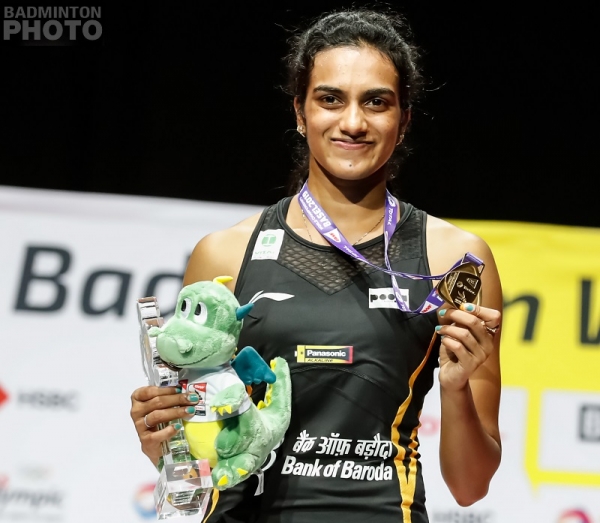
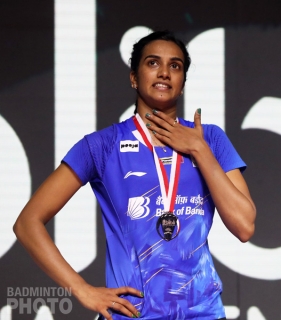
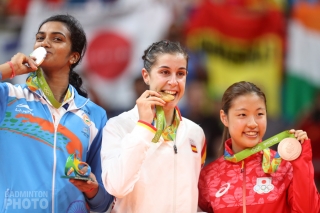

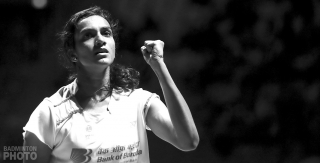
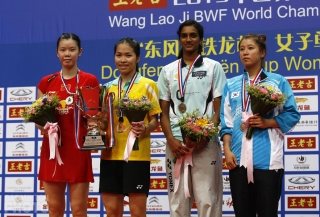
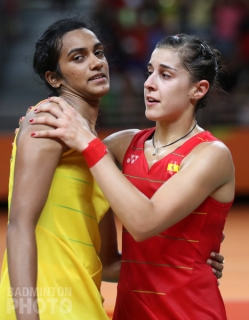
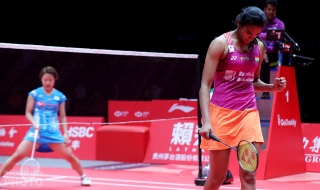
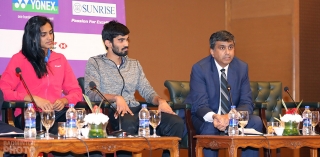
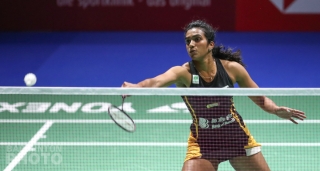
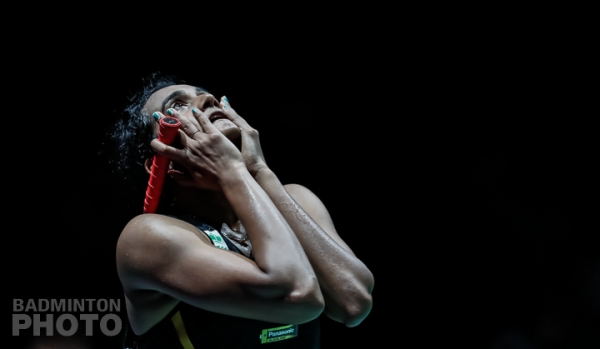

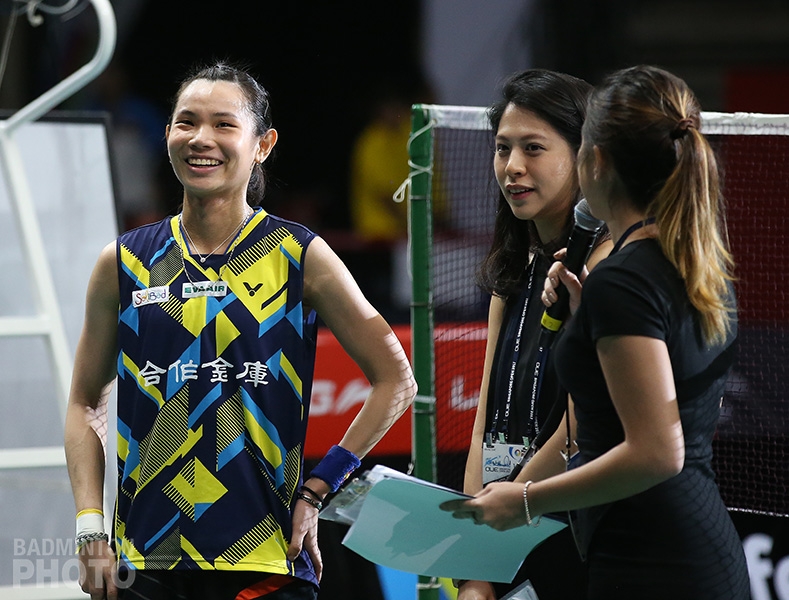
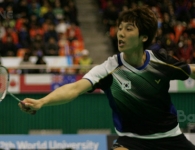
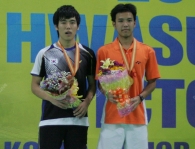

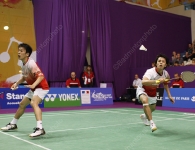

“A player doesn’t ever win silver; he/she loses out on gold.” A very questionable statement. When opponents are evenly matched or when one is leading, only to lose out, it could be said that they “lost” the gold. But consider: did LCW really “lose” the gold in Beijing? In all cases the runner up has “won” the silver, and only in some case they “lost” the gold.